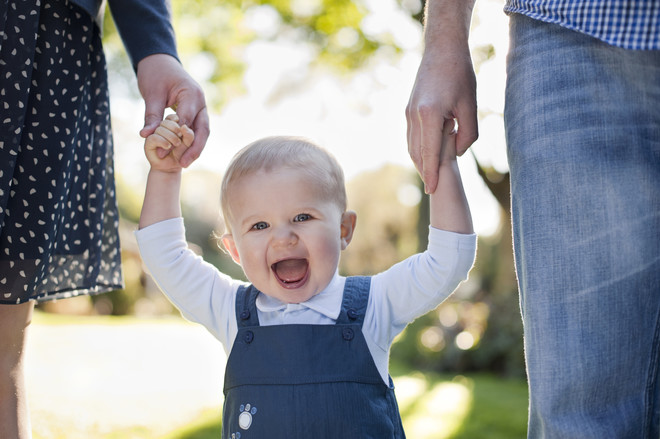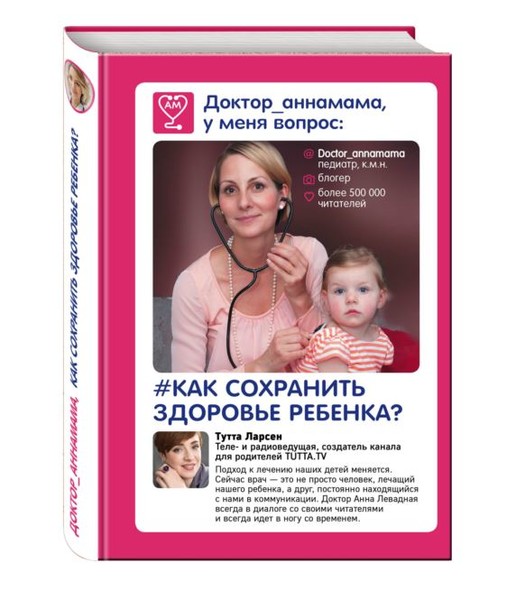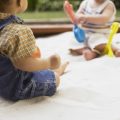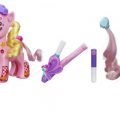Naturally, for the prefix "preventive" or“Approved by orthopedic surgeons” need to pay extra. What mother will save on the health of her baby? There is no such. We will happily open our wallets and buy miracle shoes, even if there is no evidence to that. And really? Do you need smart shoes for your baby? Anna Levadnaya, a pediatrician, Candidate of Medical Sciences, a mother of two children, an active blogger and author of the Doctor_Annamam, I have a question: How to keep a child’s health, published by Eksmo, told about this. A photo: GettyImages The baby is growing, his body is just being formed. And legs too. In this process, they first need freedom of movement. Shoes should mainly protect from cold and injury, and also give maximum freedom to the movements of the child and the foot itself. The main criterion for choosing children's shoes is how little it violates the physiology and biomechanics of growing feet. You need to pay attention to a few points. • Weight: the lighter the shoes, the freer the child walks and runs. • Sole: the foot of a person walking bends over the toes, therefore, in order not to violate the natural mechanics of the step, the sole should not be hard, hard slippery and sticky. Flexible shoes (especially in the sock area) allows the foot to grow as loosely as possible and will not limit movement of the foot and the development of muscle stabilization systems. • Insole: smooth, soft, without arch support (an arch support is a marketing move; children do not need it). • Straps: good fixation (ideally - stickies or laces). • Size: in size (most importantly - not small; better let the shoes be large than small). • Material: as breathing as possible, especially in the hot season. • Heel: let's say, but short (about 1–1.5 cm). • Nose: better open to it was obvious size, avoid the spike / narrow nose • Back:. is not high and hard. The maximum physiological position for the development of the child’s foot is barefoot walking. Therefore, the ideal pattern for shoes is barefoot. Stiff and crushing shoes can cause foot deformities, disrupt the development of muscles and ligaments. Remember: the terms "corrective", "prophylactic" or "anatomical" shoes are a marketing ploy! The propaganda of corrective or prophylactic shoes injures the child, ruins the parents and discredits the doctor. Only the doctor can recommend the medical shoes with individual parameters to the child. And only if the baby has specific indications for that. • Congenital gross deformity of the feet, when the shoes are part of the treatment complex, and the possible dysfunction is the lesser of evils. For example, with congenital clubfoot. • Neurological pathology, such as cerebral palsy, where, in spastic forms, shoes keep the foot from forming neurogenic pathological units, and with paresis and paralysis, it is able to hold the ankle and allow the child to walk at least somehow. postoperative correction of complex orthopedic pathology, when it is undesirable to deprive movements completely, but some restriction is necessary.
A photo: GettyImages The baby is growing, his body is just being formed. And legs too. In this process, they first need freedom of movement. Shoes should mainly protect from cold and injury, and also give maximum freedom to the movements of the child and the foot itself. The main criterion for choosing children's shoes is how little it violates the physiology and biomechanics of growing feet. You need to pay attention to a few points. • Weight: the lighter the shoes, the freer the child walks and runs. • Sole: the foot of a person walking bends over the toes, therefore, in order not to violate the natural mechanics of the step, the sole should not be hard, hard slippery and sticky. Flexible shoes (especially in the sock area) allows the foot to grow as loosely as possible and will not limit movement of the foot and the development of muscle stabilization systems. • Insole: smooth, soft, without arch support (an arch support is a marketing move; children do not need it). • Straps: good fixation (ideally - stickies or laces). • Size: in size (most importantly - not small; better let the shoes be large than small). • Material: as breathing as possible, especially in the hot season. • Heel: let's say, but short (about 1–1.5 cm). • Nose: better open to it was obvious size, avoid the spike / narrow nose • Back:. is not high and hard. The maximum physiological position for the development of the child’s foot is barefoot walking. Therefore, the ideal pattern for shoes is barefoot. Stiff and crushing shoes can cause foot deformities, disrupt the development of muscles and ligaments. Remember: the terms "corrective", "prophylactic" or "anatomical" shoes are a marketing ploy! The propaganda of corrective or prophylactic shoes injures the child, ruins the parents and discredits the doctor. Only the doctor can recommend the medical shoes with individual parameters to the child. And only if the baby has specific indications for that. • Congenital gross deformity of the feet, when the shoes are part of the treatment complex, and the possible dysfunction is the lesser of evils. For example, with congenital clubfoot. • Neurological pathology, such as cerebral palsy, where, in spastic forms, shoes keep the foot from forming neurogenic pathological units, and with paresis and paralysis, it is able to hold the ankle and allow the child to walk at least somehow. postoperative correction of complex orthopedic pathology, when it is undesirable to deprive movements completely, but some restriction is necessary. Photo:Eksmo Publishing HouseIn most cases, clubfoot is normal for young children and goes away on its own, the child simply “outgrows” it. Clubfoot should worry the doctor or parents if it is accompanied by a pronounced curvature of the foot and a gross violation of function. If treatment is needed, with clubfoot you have to wear special plaster or plastic splints, and not orthopedic shoes.The main thing is to remember that the main formative factor in the process of foot development is movement, and excessive, unjustified fixation at an early age can lead to persistent structural disorders. With X- and O-shaped legs, as well as flat feet, flat valgus and hollow feet, therapeutic orthopedic shoes do not solve the problem. Here, individual therapeutic insoles, exercise therapy, physiotherapy, massage, taping or even surgical treatment are used. Read more:
Photo:Eksmo Publishing HouseIn most cases, clubfoot is normal for young children and goes away on its own, the child simply “outgrows” it. Clubfoot should worry the doctor or parents if it is accompanied by a pronounced curvature of the foot and a gross violation of function. If treatment is needed, with clubfoot you have to wear special plaster or plastic splints, and not orthopedic shoes.The main thing is to remember that the main formative factor in the process of foot development is movement, and excessive, unjustified fixation at an early age can lead to persistent structural disorders. With X- and O-shaped legs, as well as flat feet, flat valgus and hollow feet, therapeutic orthopedic shoes do not solve the problem. Here, individual therapeutic insoles, exercise therapy, physiotherapy, massage, taping or even surgical treatment are used. Read more:

Making Money with Desserts: Success Stories
Evgeniya Polischuk (Fedutinova) instagram:@evgeniyafedutinovavk.com/janeshomebaking– It all started with baking for family and friends. Gradually, I started posting photos of my baked goods on Instagram – and orders started coming in. I made my first custom-made cake on October 13, 2014, and a little earlier I started making macaroons and cupcakes. You could say that the business “found me”, I am very […]

Soups are cold recipes with photos
Cold cucumber soup with yogurt and lemonsorbet from the chef of the restaurant La Taverna Alexander Zhurkin Photo: Getty Images Ingredients: Plain yoghurt – 125 g Cucumber – 150 g Lemon/lime sorbet – 50 g Cocktail shrimp – 24 g Fresh ginger juice – 1 g Lime juice – 5 g Fresh orange juice – 5 g Parsley – 1 g Pink pepper – 1 g Watercress – […]

barbeque kebab
Pork tenderloin in glaze Photo:Dmitry Bayrak/dbstudioPreparation time: 20 minutes + marinating time.Calories: 454 kcal per serving.For 4 servings: 4 pork tenderloins (approximately 300 g each), 1 onion, 2 cloves of garlic, 1 tsp. lemon zest, 1 tsp. lemon juice, a pinch of ground cumin, coriander and turmeric, 1 tbsp. vegetable […]

Pierre Duacan: dietary recipes: Ducane diet
Beetroot soup Photo:Season’S, Luxury Hotels RepresentationYou will need:· Boiled beetroot – 60 g· Fresh cucumbers – 20 g· Red radish – 20 g· Green onions – 10 g· Egg – 1 pc.· Drinking mineral water – 200 g· Salt – 1 gPreparation:· Boil the egg and beetroot.· Grate the cucumbers, radish and part of the beetroot. Put everything […]





